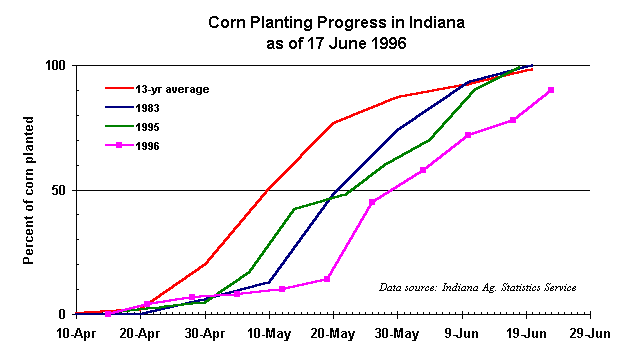
Indiana corn growers faced many challenges in 1996, beginning with a planting season that crawled at a snail's pace until the end of May. Planting progress finally reached the halfway mark by the very end of May, about three weeks behind the 13-year average (Fig. 1). Some areas of Indiana did not finish or give up on planting corn until early July.

The effects of the delayed planting season continued throughout the rest of the growing season. About half of the state's crop pollinated during August when normally pollination is nearly finished (Fig. 2). Fortunately, few areas of the state experienced severe moisture deficits or excessive heat during the critical silking and pollen shed period.
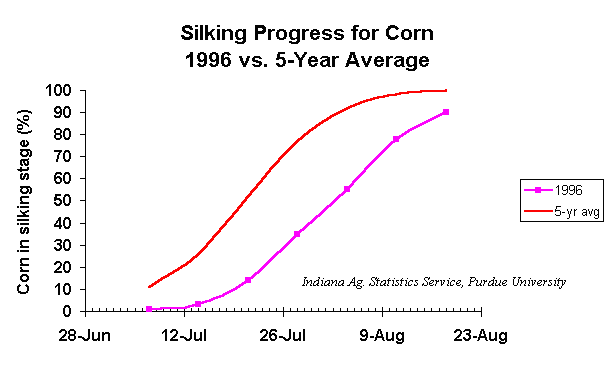
The grain fill period (between silking and maturity) was generally cooler than normal, giving the corn crop little opportunity to 'catch up'. In fact, grain fill progress in the 1996 corn crop was more delayed than in 1992 (another cool summer) because of the added effects of the delayed planting season. By late in the season, the percentage of the state's corn crop that had reached the 'dent' stage of grain development was still two to three weeks behind the five-year average (Fig. 3).
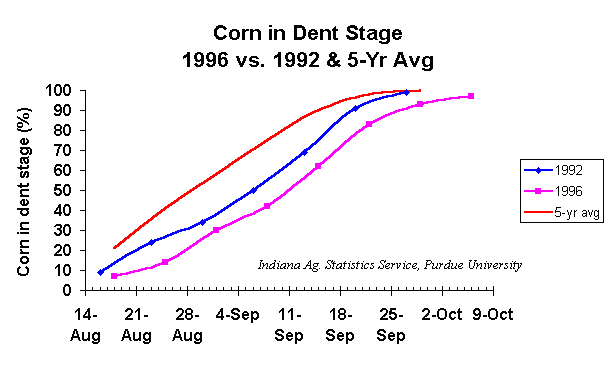
By early September, folks began to worry in earnest about the possibility of a killing fall frost occurring before much of the state's corn crop had reached physiological maturity. Luckily, the majority of the crop reached maturity before several frost events occurred during the first two weeks of October (Fig. 4). However, severe frosts during the second week of October did injure much of the late-planted crop in northern and eastern Indiana that was not yet 'mature and safe frost'.
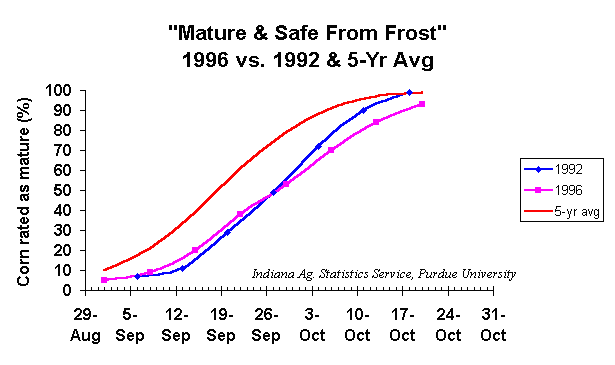
Not unexpectedly, corn harvest began later than normal (Fig. 5) due to the later than normal maturing of the crop. In fact, the pace of harvest was on par with the oft' remembered slow harvest of 1992 through the end of October. But, favorable weather in early and mid-November favored the near-completion of harvest before December rolled around.
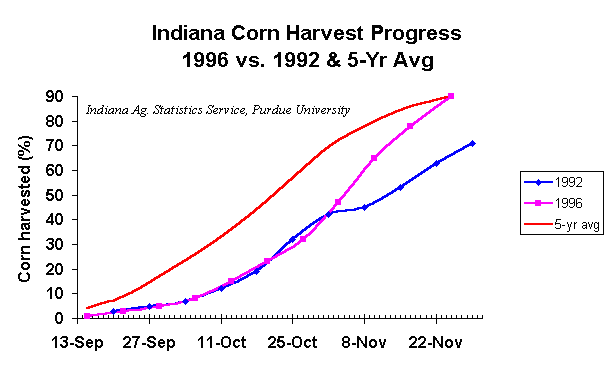
Grain moisture content throughout harvest in 1996 averaged as wet as the infamous wet harvest of 1992, both of which were significantly wetter than that reported during the unusually favorable fall of 1995 (Fig. 6). The unusually high grain moisture contents in both 1992 and 1996 are not difficult to explain, however. Whenever grain maturity is delayed until late September and early October (or later), subsequent grain moisture loss in the field is greatly slowed because of the normally cooler weather in mid-October versus mid-September.
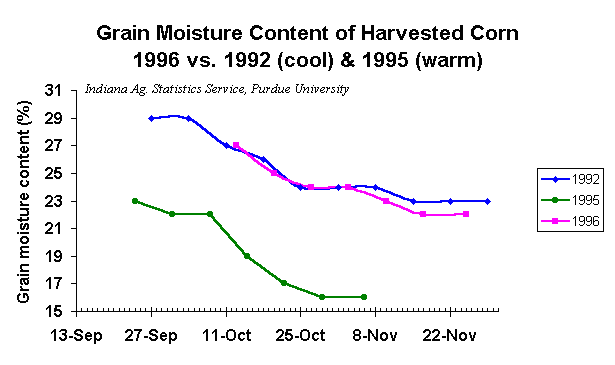
What is perhaps amazing about the 1996 Indiana corn crop is that the estimated yield per acre (124 bushels as of 12 November) is only five to six percent below the long-term trend line (Fig. 7). Many factors influence yield, but one important factor that probably had a great influence on minimizing the potentially disastrous effects of the delayed planting season was a relatively stress-free grain fill period. In particular, the absence of widespread moisture deficits and excessive heat (similar to that of the record-setting 1992 corn crop) helped moderate the damaging effects of a delayed planting season.
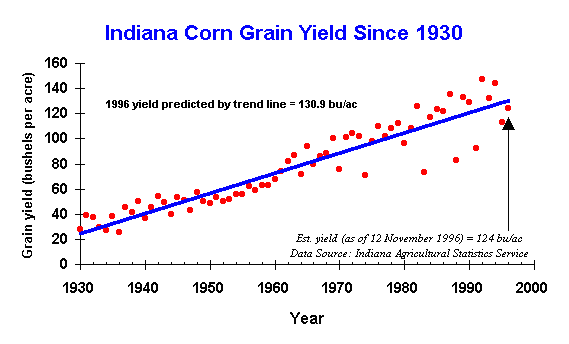
The source of the statistical information used in this article was obtained from Indiana's Agricultural Statistics Service, located at Purdue University.
![]() Return to the the Chat 'n Chew
Cafe.
Return to the the Chat 'n Chew
Cafe.
![]() The Corn Growers Guidebook , a WWW
resource for corn management systems in Indiana and the eastern CornBelt.
The Corn Growers Guidebook , a WWW
resource for corn management systems in Indiana and the eastern CornBelt.
![]() Purdue University Agronomy Extension
WWW Home Page.
Purdue University Agronomy Extension
WWW Home Page.
![]() Purdue Agronomy On-Line! ,
Purdue's Agronomy Department WWW Home Page.
Purdue Agronomy On-Line! ,
Purdue's Agronomy Department WWW Home Page.